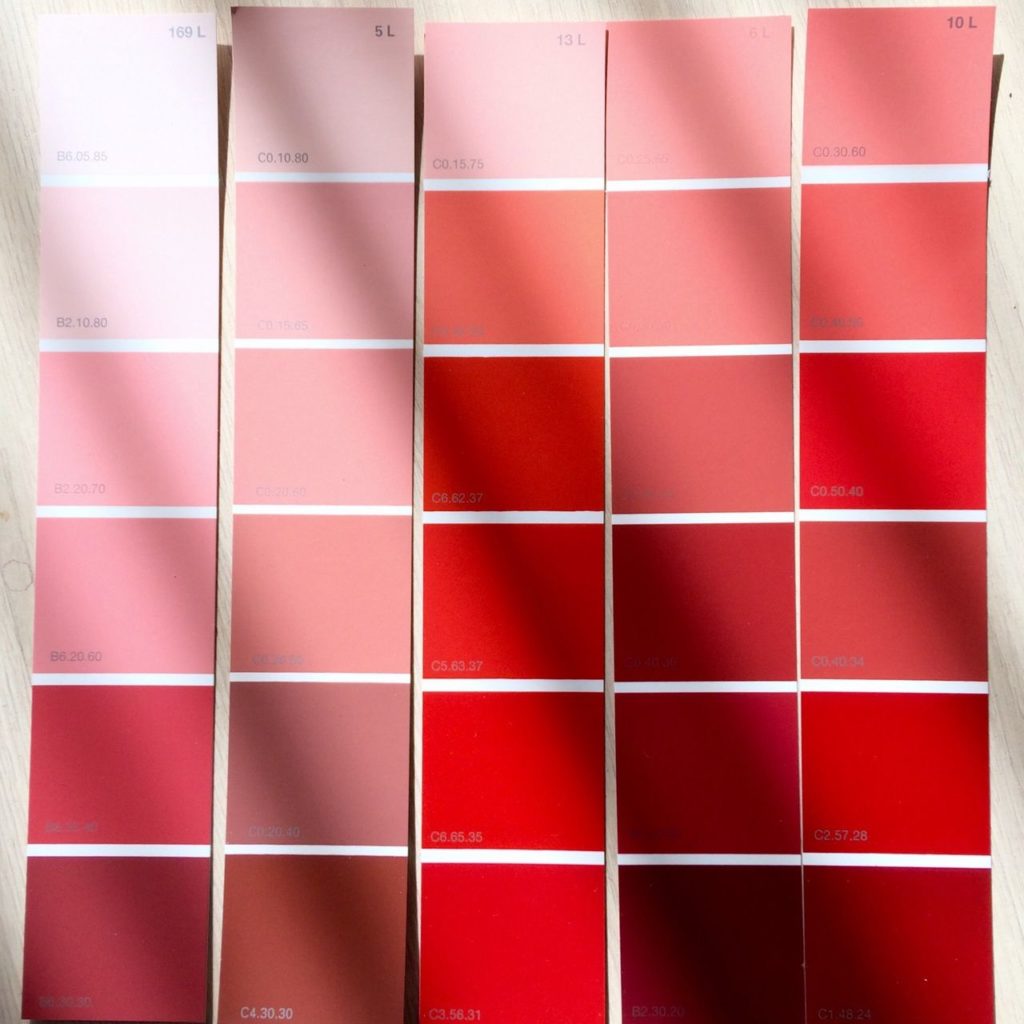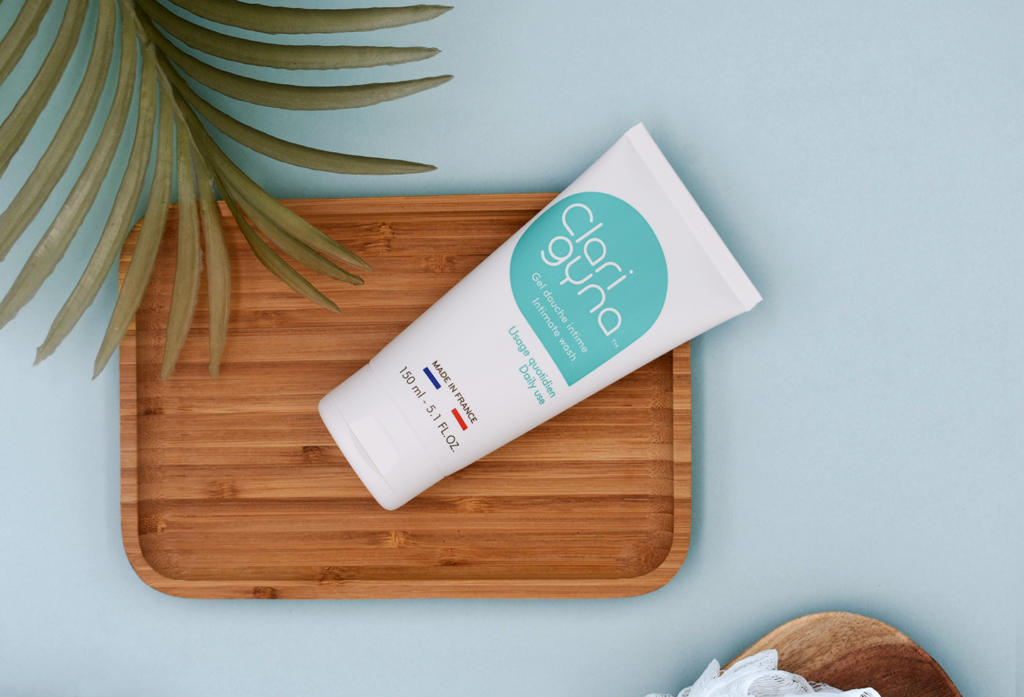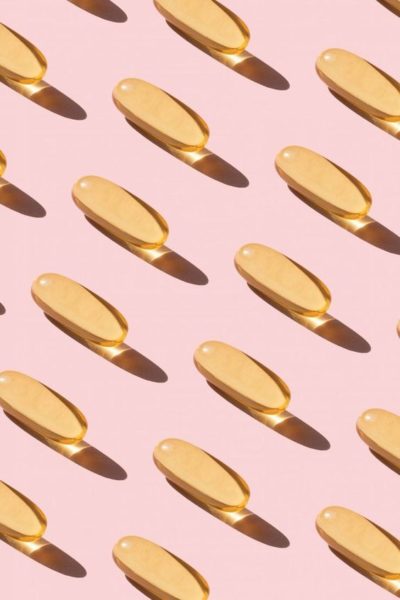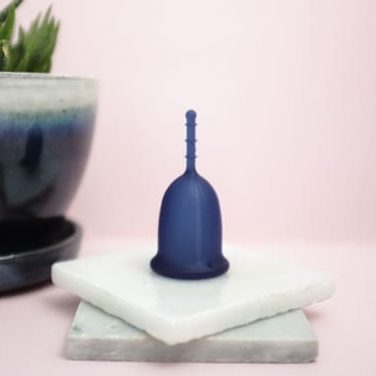Vaginal discharge: what is normal?
Vaginal discharge, also known as white discharge or leucorrhoea, is a completely normal phenomenon in women of child-bearing age. But a change can be a sign of a vaginal infection. However, to know if there is a problem, it is important to know what “normal” vaginal discharge looks like and what is not.
Vaginal losses, what is it?
Vaginal discharge is a mixture of cervical mucus produced by the cells of the cervix, vaginal secretions, dead cells from the vaginal wall, and bacteria from the vaginal flora 1. Moreover, as their production is very much linked to that of sex hormones, only women of childbearing age (i.e. from puberty to menopause), experience this phenomenon.
- Cervical mucusis a more or less viscous liquid secreted by the cells of the cervix. These secretions are influenced by the menstrual cycle and therefore vary in abundance and consistency during the cycle. At the moment of ovulation, they facilitate the passage of spermatozoa into the uterus, becoming more liquid and abundant. On the contrary, outside of ovulation, they thicken to prevent bacteria from entering the uterus. This is in fact the principle of the symptothermal method: by monitoring several parameters of one’s cycle such as temperature, abundance and consistency of cervical mucus, it is possible to detect one’s own ovulation period, the so-called “fertility window”, and to act accordingly to prevent or facilitate a pregnancy.
- Vaginal secretions are produced naturally by the cells of the vaginal wall: these secretions serve to moisten the vagina to prevent pain during penetration. But this is not necessarily a sign of more or less arousal: the amount of vaginal lubrication varies greatly from one woman to another.
- The cells of the vaginal wall renew themselves naturally, just like skin cells. The higher the concentration of estrogens in the body, the more they will renew themselves and feed the growth of the bacteria of the vaginal flora, those nice bacteria that will prevent other micro-organisms from causing infections.
What does a normal vaginal discharge look and smell like?
Well , guess what? Even scientists cannot agree!
A few rare clinical studies have attempted to define a “normal” amount, color or odour of vaginal discharge 2.
But as mentioned above, the amount of vaginal discharge varies enormously from one woman to another, and for a woman during her cycle and her life (pregnancy, menopause…). Therefore, there is no “normal” amount of loss. Some will feel the need to wear a panty liner to avoid feeling wet, but it’s all a matter of preference.
The color of the discharge also varies during the menstrual cycle: from transparent to slightly white. The main idea to remember is that if it is a color other than transparent, white, sometimes slightly yellow, there is a risk of infection.
Finally, there is the thorny question of odor: what is normal is that vaginal discharge has a slight odor. If it bothers you, then it may be a vaginal infection.
The sure sign is if you have traces of blood, intense itching, redness, or a burning sensation (at the time of sexual intercourse or urination): this is a sure sign that you have an infection.
Vaginal discharge is the result of the natural process of cleansing the vagina.
Despite what many advertisements want women to believe, it is quite normal to have losses and therefore a slight feeling of dampness. It is not necessary to perfume the vulva, douching or self-medicate at the first alert, as this could instead cause infections. Remember: the vagina cleans itself and defends itself very well on its own!
1 AM. Powell and P. Nyirjesy, « New perspectives on the normal vagina and noninfectious causes of discharge », Clinical Obstetrics and Gynecology, Sept. 2015, 58(3), 453-463.
² M. Anderson, A. Karasz and S. Friedland, « Are vaginal symptoms ever normal ? A review of the literature », MedGenMed, Nov 2004, 6(4), 49.
Intimate itching, what causes it and what solutions to relieve it?
Do you have a sly vagina? The burning vulva? The apricot color poppy ? Intimate parts that get damaged ? The gynecological area that stings? In short, your private parts itch and you don’t know where it’s coming from, but your vulva is not doing well. Enough poetry, all the answers to your questions in this article!
Itching of the private parts, also called vulvar pruritus, is very common. In fact, nearly 1 in 5 women will experience intimate irritation1 for more than 3 months in their lifetime. The intimate area is characterized by a variety of different skins: some with hairs, others without, the entrance of the vagina does not even have the upper protective layer found on the skin, so it is a mucous membrane that is even more sensitive. The intimate area can therefore be irritated quite easily…
Stress, periods of change in one’s life, poor hygienic protection, everywhere explore these embarrassing ailments!
Contact allergy or irritation
Have you changed brands of panty liners or laundry recently? This may be the cause of the redness and itching you have. It can take a few days of contact for irritation to develop, so if you’ve changed your habits in the last few days, change your product to make sure it’s not your new underwear that’s causing the irritation.
In general, prefer cotton panties that are not too tight, which allows for better evacuation of perspiration and avoids irritation, and avoid scented products (wipes, soap, towels, laundry…), as perfumes are often a source of allergies. Think about it if you use scented sanitary pads and you systematically have irritations during your period!
Poor quality hygienic protections
Because there are no regulations in Europe regarding the components of intimate protection, many manufacturers of tampons (among others) and cups (also!) make life difficult for your vagina.
Silicone from China, injection of phthalate, glyphosate or chlorine to make the tampons more absorbent; nothing beats a Made in France/Europe product whose origin of the products will initially be reassuring, then take a look at the regulatory certifications of the brand (ISO, FDA, MDSAP standards…).
We will soon come back to the subject of regulations, a battle that is fought on a daily basis in the company. Claripharm. Anyway, if you are holders of the Claricup, know that at Claripharm, not only our menstrual cup is Made in France, but in addition, we are one of the only brands to be 100% standardized.
Pubic lice
Also known as crabs! We reassure you right away, to have some is not a sign of bad hygiene, because the pubic louse clings very well to the skin with its claws (this small microscopic insect looks like a crab). It is transmitted through direct contact with an infected person, but also through sheets, towels or used clothing (be careful when trying on bathing suits!). Always keep your underwear on).
Symptoms are itching (even worse at night) caused by the bites, which appear red and then grey-blue.
It is very simple to get rid of it: one or even two applications of a shampoo prescribed by your doctor are enough. To avoid any recurrence, it is important to inform your recent sexual partners and to clean your bedding and underwear at 90°C.
Vaginal mycosis
A vaginal mycosis is very often caused by a fungus: Candida albicans. Ce champignon microscopique fait naturellement partie de la flore vaginale, ce petit monde de bactéries et de levures qui colonise le vagin et lui permet d’être en bonne santé.This microscopic fungus is a natural part of the vaginal flora, the small world of bacteria and yeast that colonizes the vagina and keeps it healthy. But sometimes, an antibiotic treatment or too aggressive intimate hygiene can disturb the vaginal flora and then Candida albicans proliferates too much, causing itching and odourless white vaginal discharge.
To relieve these symptoms, local antifungals are available without a prescription from a pharmacy, which can be helpful if you know you are prone to recurring fungal infections. Nevertheless, only a doctor will be able to confirm with certainty that you are suffering from a fungus and possibly take a sample to identify the precise germ and the most suitable treatment.
Vaginal dryness
Vaginal dryness, a source of irritation and discomfort rather than itching, is common in postmenopausal women, but menopause is not the only cause of vaginal dryness. An overly aggressive intimate hygiene, the consequences of pregnancy or because of taking certain medications (antidepressants, antihistamines…), vaginal dryness may occur. In fact, nearly 55% of women suffer from it during their lifetime²!
If this is the only symptom you have, you can settle for a local solution: lubricants (which have an immediate but short action) and moisturizing gels (which have a longer action) will be your best friends! You can buy them in pharmacies, with or without a prescription. On the other hand, if vaginal dryness is accompanied by hot flashes, or anarchic periods, you may be entering pre-menopause… it is then important to talk about it and be accompanied by a health professional who will be able to guide you through this new stage of your intimate life.
As we know, these itches and irritations are sometimes difficult to manage… even though solutions exist! The most important thing is to talk about it with a healthcare professional, who will be able to point you in the right direction.
1 C.K. Stockdale, L. Boardman, « Diagnosis And Treatment Of Vulvar Dermatoses », Clinical Expert Series, 2018 Feb, 131(2) : 371-386.
² SOGC Clinical Practice Guidelines, « The Detection And Management Of Vaginal Atrophy », International Journal of GYnecology and Obstetrics, 2005, 88, 222-228.
Vaginal infections, how to recognize and treat them
In the catalog of the joys of owning a female genitalia, there are so many things:
Because if at the base the uterus is intended to do a rather incredible thing (to make a baby grow inside it, anyway), all the machinery around it sometimes brings *something* inconveniences. Oh, you probably know them: Itching, Premenstrual Syndrome, Menstruation… In short, life with a vagina isn’t always easy.
And among those things that people with a penis don’t know about are vaginal infections: AH, itching! Loss-who-has-a-color-weird! Maritime smells. (?!) It is a story that every woman will know at least once in her life. Here’s how to make sure it ends well, and more importantly, that it doesn’t repeat itself too often.

Recognizing a vaginal infection
Itching or even pain are the first signs of a vaginal infection. If you’ve eliminated the different causes of an itch and your vaginal discharge has changed in appearance at the same time: BINGO, you’ve hit the jackpot.
You are far from being the only one: 75% of women will develop a vaginal mycosis during their lifetime1, while bacterial vaginosis affects 1 in 3 women each year in the world2. Because yes, there are several kinds of vaginal infections:
- Vaginal mycosis, also called candidiasis, because it is caused in 90% of cases by a yeast called Candida albicans,
- Bacterial vaginosis, so called because it is caused by another type of microorganism: bacteria such as Gardnerella vaginalis, Mycoplasma hominis, or Prevotella spp.
- Trichomoniasis, an infection caused by the parasite Trichomonas vaginalis.
It is relatively easy to tell the difference between the three by observing your vaginal discharge:
A vaginal yeast infection will cause itching and redness in the vulva, and an abundant but odourless white discharge that looks a bit like curdled milk (if you are disgusted now, don’t continue reading).
Bacterial vaginosiswill also cause itching, but the difference is that you will have a gray/green discharge, with a “rotten fish” smell.
A Trichomonas infection will cause tingling and redness in the vulva, but the discharge at the bottom of your panties will be smelly, beige and “foamy”, like soapy water.
These symptoms may also be accompanied by burning sensations or difficulty urinating.
The other difference between the three? Since they are not caused by the same microorganisms, the treatments will also be different.
How to treat a vaginal infection
It is very frequent that by the time you go to the pharmacy or make an appointment with the doctor, the infection disappears by itself: lucky! But if it’s been going on for too long or if it’s the 4th time in a year, it’s time to act.
To relieve a vaginal yeast infection, there are anti-fungal treatments available without a prescription in pharmacies: in the form of a cream for external use or an egg to be inserted into the vagina, they will be of great help if you know how to recognize the symptoms.
To relieve bacterial vaginitis, however, it is necessary to see a doctor for antibiotic treatment. If you are pregnant, don’t delay: a vaginal bacterial infection can trigger premature delivery.
To treat a Trichomonas infection, it is also necessary to go to the doctor because an antibiotic must be prescribed. Since it is a sexually transmitted infection (which is not the case with fungus or bacterial vaginosis), it is necessary that the sexual partner also be treated. The use of male or female condoms is also recommended to prevent recurrence.
If you know there is a problem but cannot identify the cause, a health care professional (gynecologist, general practitioner or midwife) will be able to take a swab that will precisely identify the microorganism that has settled a little too well in your vagina.
But despite these treatments, be aware that between 5 and 30% of women will have a recurrence.
Understand what triggers an infection to prevent recurrence.
Normally, the vagina is lined with what is called vaginal flora. In the vaginal flora, one finds in majority Lactobacilli which one also calls “probiotics” (literally “for life”): they are the nice bacteria, those which play the role of shield and which make that the pH of the vagina is acidic (between 3,8 and 6). Pathogenic yeasts and bacteria are also found in the flora, but the acid pH produced by the Lactobacilli limits their development, which prevents infections.
But in the vagina as in life, everything is a question of balance.
This balance is fragile, and tilting the scale to one side or the other causes infections: On the side of pH too acidic (below 3.8), it is the yeasts that take over and cause mycosis. If the pH is too basic (higher than 6), pathogenic bacteria settle.
Remember to check if your intimate cleansing products or lubricants have a pH between 3.8 and 6 so as not to disturb this balance. A high concentration of estrogen in the body (such as during pregnancy or with the birth control pill) can acidify the vagina, while menstruation or semen tends to make the pH basic. Finally, there are situations where, without knowing it, one has unknowingly thrown the scale out the window: a tampon that absorbs everything (even good bacteria), an intimate toilet that is too aggressive, or a broad-spectrum antibiotic treatment are the equivalent for the vagina of weeding with a flamethrower: by wanting to remove everything, one also removes the protection provided by the Lactobacilli, and one doesn’t know what will take over… Translated with www.DeepL.com/Translator (free version)
In any case, it is necessary to stick to a maximum of one intimate toilet per day, and perhaps change one’s habits if the recurrences are too frequent. It is also interesting to bring back probiotics, either through food (fermented cabbage, yoghurts, dietary supplements) or through eggs that are inserted into the vagina, available without a prescription in pharmacies. In this way, you provide your body with additional defenses.
That’s it, you are now equipped to take care of your intimate flora and help it fight vaginal infections!
1 Vanessa Cardinale, « Les candidoses vaginales recidivantes à Candida Albicans », Thèse de Diplôme d’Etat de Docteur en Pharmacie, sous la direction de Françoise Hinzelin, Nancy, Université Henri Poincare – Nancy 1, 2001, 131 p.
² JE Allsworth, JF Peipert ; « Prevalence of bacterial vaginosis : 2001-2004 National Health and Nutrition Examination Survey data », Obstet. Gynecol., 2007 Jan, 109(1), p. 114-120.
Intimate hygiene: how about reviewing the basics?
To avoid vaginal infections and irritations, daily intimate cleansing is often recommended. But with what? How? Exactly how often? Paradoxically, an overly aggressive intimate toilet can causeinfections. These are important issues because they are crucial to our intimate health.
Why is it necessary to wash *down*?
Unlike the vagina, which cleans itself, the external sexual organs do not clean themselves. If the vaginal discharge accumulates too much at the vulva, it can promote the development of microorganisms that will cause vaginal or urinary tract infections. Good intimate hygiene is therefore essential to regularly eliminate vaginal discharge accumulated on the vulva, and to avoid bringing bad germs back where they could develop and cause discomfort.
After going to the toilet, how do you wipe?
The female genital orifices are very close to a source of bad bacteria: the anus. So always remember to wipe from front to back. Thus you will avoid bringing back to your vagina bacteria from the anus that have nothing to do with it.
Also remember to avoid anything that will retain perspiration.
Synthetic underwear, panty liners, slim trousers and towels have a “barrier effect”: by preventing perspiration from draining properly, they will increase humidity and temperature, which encourages the development of bacteria or fungi1.
Sexuality
Another activity brings bacteria to the wrong place: sex! If you are particularly prone to urinary or vaginal infections, urinate immediately after sex to get rid of any bacteria. And most importantly: use a condomuntil you are sure that neither you nor your partner is carrying a Sexually Transmitted Infection (STI).
When it comes to how often and what to clean with: choose SOFTNESS and SIMPLICITY.
Choose your intimate hygiene product with care
For daily cleansing, use the simplest possible intimate cleanser.
The vulva is a sensitive area: it must be cleaned without irritating it. In order to avoid irritations and disturb the vulval flora, some ingredients should be avoided :
- Endocrine disruptors: phthalates.
- Unnecessary ingredients: perfumes and dyes.
- Ingredients too aggressive for this area: Chlorhexidine, Sodium Laureth Sulphate and alcohol.
- A pH that would disturb the flora: no soap with a basic or neutral pH, you need an acidic pH, between 4 and 6.
It is not necessary to do an intimate cleansing more than once a day: beyond that, there is a risk of over-stripping the skin, which causes micro-lesions and removes the natural barrier that protects us.
In summary we forget: deodorants, wipes after each visit to the toilet, and scented toilet paper, or rather: everything that is scented. Because the more products you use, the more likely you are to develop cystitis, vaginal infections, candidiasis or other joyfulness2.
The false good idea
Unfortunately, women often think that a feeling of dampness and a slight odor are bad signs. But not at all: on the contrary, it is a sign that your vagina cleans itself very well.
It is therefore totally useless to cleanse inside the vagina: the risk is to unbalance the vaginal flora and cause infections. Vaginal showers are thus to be proscribed.
1 S. Guaschino, C. Benvenuti, SOPHY Study Group, « SOPHY Project : an observational study of vaginal pH and lifestyle in women of different ages and in different physiopathological conditions », Minerva Ginecologica, 2008 Apr;60(2):105-14.
² S.E. Crann, S. Cunningham, A. Albert, D.M. Money and K.C. O’Doherty, « Vaginal health and hygiene practices and product use in Canada : a national cross-sectional survey », BMC Women’s Health,
Do you have further questions about the daily use of your menstrual cup? Write on social networks or by email to: contact@claripharm.fr


















